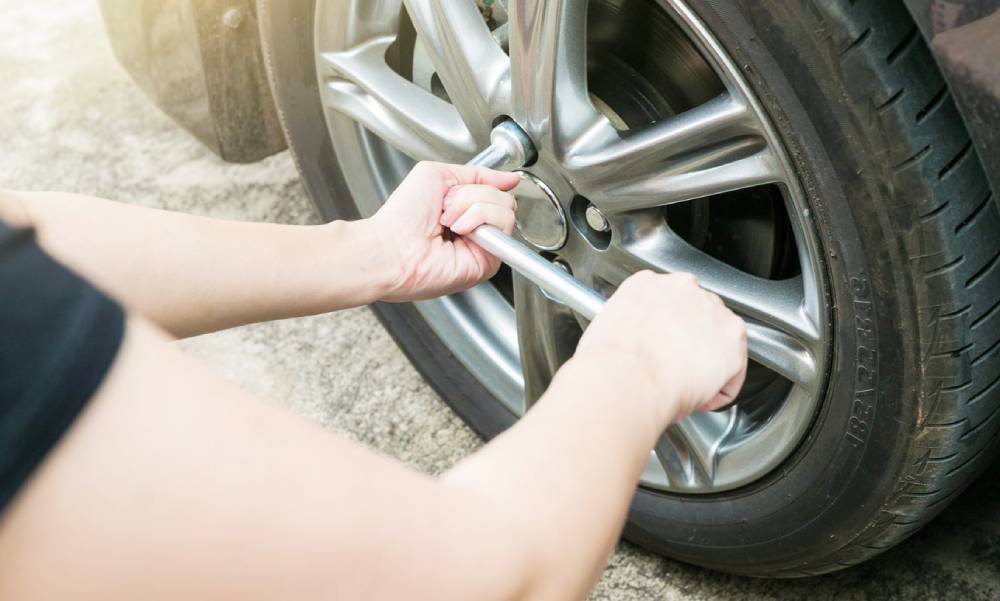Getting a flat tire can be a stressful and frustrating experience, but knowing how to change a wheel on your car can save you time and money.
Changing a wheel yourself is a fairly straightforward process that can be done with a few basic tools and some patience.
In this article, we’ll guide you through the steps of changing a wheel on your car and everything you need to do it.
How to Change a Wheel Step by Step
By following these steps and safety tips, you can change a wheel on your car by yourself and be back on the road in no time.
Find a Safe Location
The first step in changing a wheel on your car is to find a safe location to do it. Make sure you are parked on a flat surface away from traffic, and use your hazard lights to alert other drivers that you are changing a tire.
If you are on a busy road or highway, move your car to the side of the road as far as possible and use a warning triangle or flares to indicate your presence to other drivers.
Gather Your Tools
Before you begin, gather all the tools you will need to change the wheel. These include:
- Spare wheel: Make sure you have a spare wheel in good condition and the correct size for your car;
- Lug wrench: A lug wrench is a tool used to loosen and tighten the lug nuts on your wheel. It should be the correct size for your car’s lug nuts;
- Jack: A jack is used to lift your car off the ground so you can remove the wheel. Make sure you have a jack that is compatible with your car and can lift it high enough;
- Wheel chocks: Wheel chocks are small blocks placed behind the other wheels to prevent your car from rolling while you are changing the wheel.
Loosen the Lug Nuts
Using the lug wrench, loosen the lug nuts on the flat tire by turning them counterclockwise. Do not remove them completely yet, just loosen them enough so you can easily turn them by hand later.
If the lug nuts are particularly tight, you may need to use your foot to apply more force to the wrench.
Position the Jack
Position the jack under the jacking point of your car, which is usually indicated by an arrow or notch on the underside of the car.
Make sure the jack is stable and level before you begin to lift the car. Use the wheel chocks to secure the other wheels so your car doesn’t roll while you are lifting it.
Lift the Car
Using the jack, lift your car off the ground until the flat tire is completely off the ground. Make sure the car is stable and not wobbling before you continue.
Remove the Lug Nuts and Flat Tire
Once the car is lifted, you can remove the lug nuts completely using your hands. Remove the flat tire and set it aside.
Mount the Spare Tire
Take the spare tire and align it with the wheel studs. Push it onto the studs until it is flush with the hub. Replace the lug nuts and tighten them by hand as much as possible.
Lower the Car
Using the jack, lower the car until the spare tire is resting on the ground. Remove the jack and tighten the lug nuts with the lug wrench, turning them clockwise.
Check the Tightness of the Lug Nuts
After you have tightened the lug nuts, use the lug wrench to check their tightness again. Make sure they are tightened to the correct torque specification for your car, which can be found in your owner’s manual.
Replace the Wheel Covers
If your car has wheel covers, replace them over the spare tire. Make sure they are securely in place.
Store the Flat Tire and Tools
Once you have replaced the wheel and tightened the lug nuts, store the flat tire and tools in your trunk or designated storage area.
Make sure the flat tire is secured and won’t roll around while you’re driving.
Check Your Spare Tire
It’s important to remember that a spare tire is only intended for temporary use. Make sure to get your flat tire repaired or replaced as soon as possible, and check the air pressure in your spare tire regularly to make sure it’s still safe to use.
Safety Tips
In addition to these steps, it’s important to keep some safety tips in mind when changing a wheel on your car. Here are a few things to keep in mind:
- Always make sure your car is in a safe location and use your hazard lights to alert other drivers;
- Never change a tire on a slope or uneven surface, as this can be dangerous;
- Always use the correct tools for the job and follow the instructions in your owner’s manual;
- Make sure your car is stable and not wobbling before you begin to work on it;
- Double-check your work before driving on the new tire to make sure the lug nuts are tight and the spare tire is properly inflated.

My name is Rebecca McCarthy and I am an American girl with British heritage residing in the beautiful city of Nashville, Tennessee. I have always had a keen interest in cars, particularly brand new ones that showcase the latest technology and design features. I am also passionate about travelling and experiencing new cultures, as well as enjoying hot summer days with friends and family.



